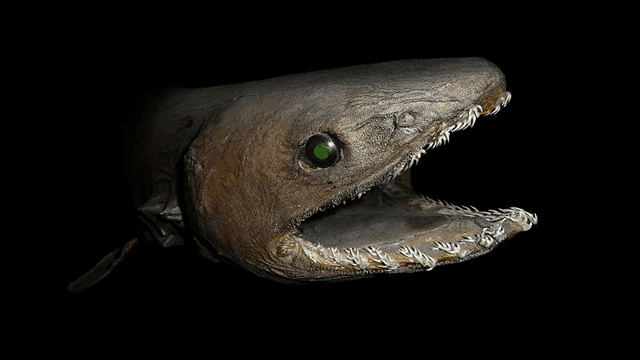INTRODUCTION
In the oceans we find large predators such as the eel shark (Chlamydoselachus anguineus), which is one of the two existing species of the Chlamydoselachidae family. Although it is widely distributed in the Atlantic and Pacific oceans, its presence in these areas is very irregular.
It is considered a living fossil due to its primitive features that have not changed over time. It is a species that is not easily seen and its main characteristic feature is its similarity to an eel, which has given it its common name.
CHARACTERISTICS
These sharks have been living on Earth for about 80 million years without obvious changes in their anatomy, which is why they are considered living fossils. However, these anatomical characteristics are beneficial for this species, so that they have allowed them to live for this long time in the oceans.
One of its main features is the presence of a large number of teeth, possessing up to 300 dental structures, quite sharp and lethal for their prey. The teeth are located in their strong, articulated jaws, allowing them to devour large animals.
Its long body has fins in the dorsal, pelvic and anal areas, the latter larger than the dorsal; in addition, it also has other fins in the form of bangs on the 6 pairs of gill slits or openings. Its color is dark brown, it can measure up to 3 meters in length and has an eel-like appearance.
HABITAT
The eel shark is a demersal or benthopelagic species, so it inhabits the deep ocean, although in some cases it has also been reported as pelagic, that is, in shallower areas, probably in search of prey.
The temperatures of its habitat are variable, from cold waters such as the arctic of Norway or the British Isles, to warmer waters such as those of Suriname, Guyana and French Guiana. Although there is no precise data on its population trend, one of the most common is in Japan, where it has been particularly seen in shallower depths.
Due to the fact that fishing in deep waters has spread considerably in several of the countries that correspond to the distribution range of this species, the scientific community is increasingly concerned about the impact on the habitat in this sense.
HABITS
The eel shark is a species that is not very common to observe, so there are few records of its behavior. Although they can be present at depths of 20 to 1,500 meters, they commonly prefer to be between 500 to 1,000 meters deep. When they go to shallower areas, they do so at night.
This species of shark is not dangerous for people, although it can cause important injuries to the hands of scientists when handling them for study. They are solitary, slow moving animals, whose life expectancy is approximately 25 years. However, as they have not been kept in captivity for research purposes, this information has yet to be corroborated.
FEEDING
Eel sharks are fierce hunters. It is very difficult for a prey to escape when caught, as they nimbly pounce on it, bending their bodies like a snake before capturing the victim. In many cases, they swallow the prey whole, and when this is not possible, they hold on to it with their large number of sharp teeth, from which it becomes impossible to break free.
They usually camouflage themselves quite well thanks to their color and hunt at night. They are carnivorous animals with a varied diet, being able to consume:
Fish.
Octopus.
Squids.
Other sharks.
REPRODUCTION
The eel shark is a viviparous species and the gestation period is estimated to last between 1 to 2 years. They can produce from 2 to 15 pups per gestation process, and these can reach up to 60 cm in length. Fertilization is internal, so both individuals must unite so that the male can introduce the spermatozoa and these reach the female’s oviducts. The process occurs through a maneuver of their bodies, in which the male holds the female.
The eel shark is probably matrotrophic, that is, the embryos would hatch from the egg inside the mother and stay there for a long period of time, feeding on the yolk of their own egg. This species is not known to have fixed breeding seasons.
